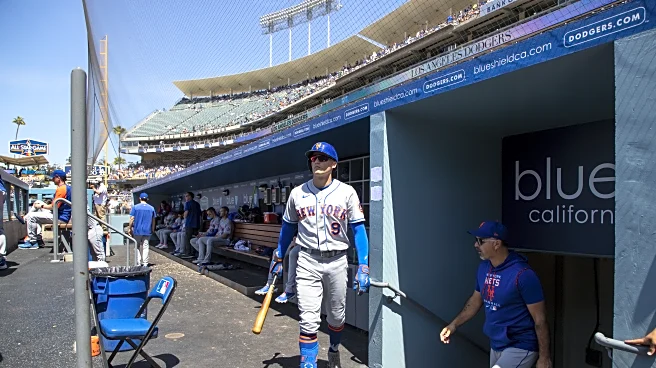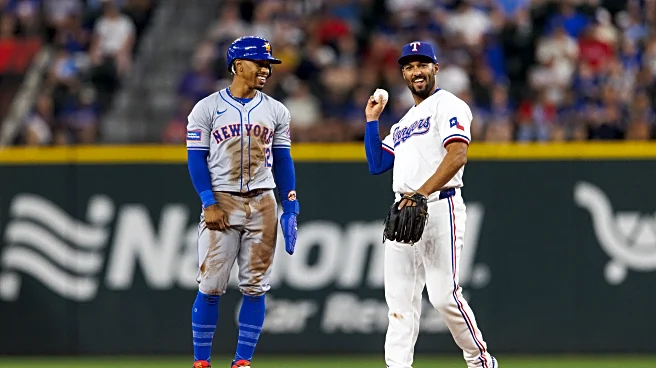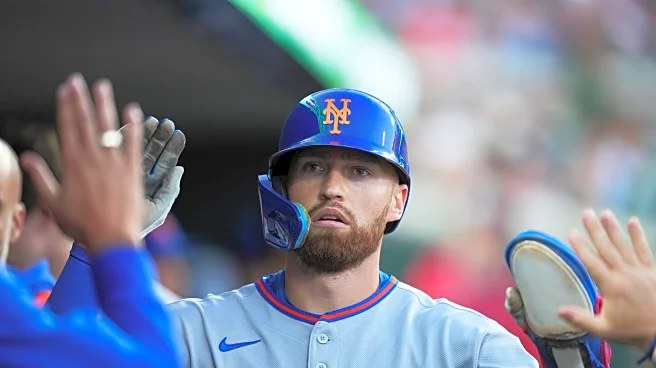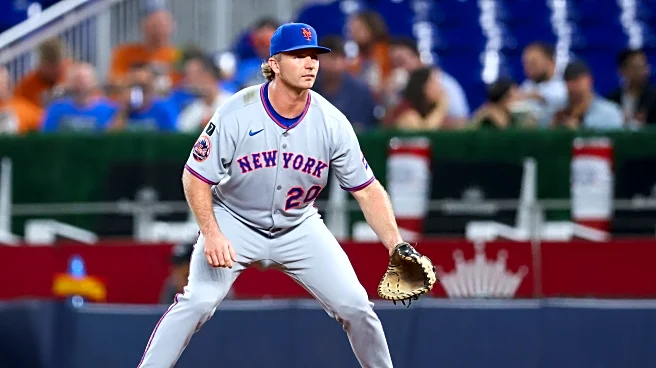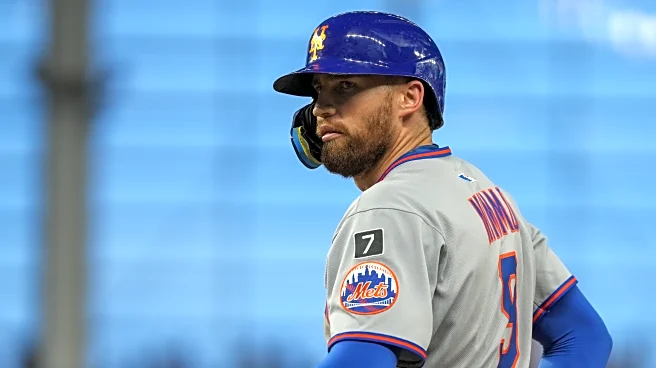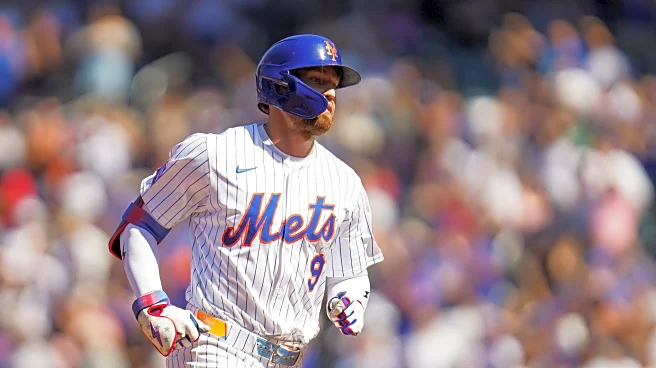The Mets managed to make a pre-Thanksgiving splash, trading Brandon Nimmo – their longest tenured player – to the Texas Rangers for Marcus Semien. The Rangers also received $5M as part of the deal. Though
Nimmo himself was reportedly surprised by the move, rumors had been out there; Jeff Passan reported a week ago that the Mets were making both Nimmo and Kodai Senga available in trade talks. Couple Nimmo’s steep defensive decline (more on that later) with David Stearns’ repeated comments emphasizing defense and run prevention and the writing was somewhat on the wall here.
This is hardly the ending we’d have expected a few years ago. When Billy Eppler signed Nimmo to an 8-year, $162M deal in the 2022-23 offseason, he was a good defensive centerfielder with three straight seasons of at least 30% better than league average offensive output. It was probably a deal two-years too long, but you could squint and justify it; Nimmo should be decent in center for a couple more seasons, good in a corner for another 3-4 beyond that, and then you’d figure things out in 2029 and 2030. The offense, meanwhile, was predicated on some of the best swing decisions in baseball coupled with decent contact skills and average power, a mix that seemed fairly sustainable.
Instead of that rosy projection, we got something much worse. Nimmo’s defense fell off precipitously in 2023 and he no longer looked like a truly viable centerfielder. Then, he ditched his previous approach at the plate for one more predicated on damage, hitting for more power at the cost of his OBP and contact skills. That tradeoff has not worked either, and his offense dipped to 5-15% better than league average rather than 30+. Issues with plantar fasciitis cropped in 2024 and have slowed Nimmo even further; it’s been painful to see him run the bases or play the field at times, and that observation is born out in declining fielding and sprint speed metrics.
So here we are, three years into Brandon Nimmo’s deal. He’s no longer a center fielder and is probably not even a corner outfielder for much longer either. His offense is no longer special and is showing further signs of decline based on his year-over-year bat speed changes and paltry results against velocity last season (.327 wOBA, -7 run value per Statcast). He’s signed for five more years and, given the organizational cache he’s earned after 10 years with the major league club, is not the kind of player you can easily bench or cut. Needless to say, that’s not a good spot to be in.
I want to break up this negativity with something more positive. Brandon Nimmo has been my favorite Met for more than a decade. The first thing I wrote at Amazin’ Avenue was a ~3,000 word screed arguing that the Mets shouldn’t trade Nimmo for Troy Tulowitzki. (Note: the analysis therein is not good, and I’d like to think I’m a touch more competent at this point.) I pounded the table for Nimmo during prospect list season and routinely argued for him to get a starting role early in his career. The one jersey I have in my closet currently is a Brandon Nimmo city connect.
It is more than okay to be bummed out that Brandon Nimmo is no longer a Met – I certainly am. We should fondly remember his contributions to the organization, even if his time here included multiple disastrous playoff collapses and disappointing seasons. At the same time, we need to be able to segment that emotional attachment from our rational evaluation of the situation. If and when you’re able to do that, a sober assessment of Nimmo’s career trajectory makes it pretty clear the Mets were better served getting this contract off the books.
Enter Marcus Semien, whose deal is far from a bargain. He’s owed $72M over the next three season and is coming off a .230/.305/.364 batting line in 2025, an 89 wRC+ worse than any mark he’s posted since his 21 game debut in 2013. At 35, he’s firmly on the downslope of his career and posted 8th percentile bat speed in 2025. Hardly a strong resume.
There’s stuff to like here, however. Semien has likely been hurt by Globe Life Stadium, one of the worst parks in baseball for right-handed power; playing his home games at Citi Field likely helps Semien yank a few more homers down the line and get his total batting line back closer to league average. More critically, Semien is still one of the best 2B defenders in baseball, evidenced by his 92nd percentile OAA last season. He’s a serious upgrade on the right side of the infield and also likely helps hedge against Francisco Lindor’s ongoing (though hardly catastrophic at this stage) defensive decline.
While the head-to-head between Nimmo and Semien might look like a “coughing baby vs. coughing baby” situation, there are a myriad of benefits to this move. I’ll fall back on the narrative crutch of the bulleted list to lay them all out:
- Long-term flexibility: Nimmo is signed for five years, while Semien is only signed for three at a marginally higher AAV. That’s a clear win even before you remember that it’ll be much easier for the Mets to bench or cut Semien from a PR perspective than it would’ve been for Nimmo if things go further south.
- Secondary value: If Semien’s bat slips any further, he’s a useful utility infielder given the defense. If Nimmo’s bat slips any further, he’s not rosterable.
- Outfield defense: With Juan Soto entrenched as a franchise cornerstone, the Mets had a clear logjam of poor fielding corner outfielders. Moving Nimmo solves that problem.
- Second base depth: This was a sneaky need this offseason given the poor performance of many of the Mets IF and Jeff McNeil’s injury. Semien fills that spot and clearly aligns with the organizational focus on defense.
- Short-term flexibility: A whole series of new possibilities has been opened by this deal. The Mets can now pursue Kyle Tucker, or they could think about trading for Luis Robert without blocking Carson Benge. They can more easily dangle Jett Williams in a deal for Tarik Skubal or Joe Ryan. They can sign a 1B/DH type like Pete Alonso or one of the big NPB bats without it being a roster flexibility disaster.
Put more succinctly, this deal might not directly make the Mets better for 2026, but it opens up a whole bunch of pathways to getting there. Couple that with the clear long-term benefits and it’s an absolute win for the front office. This deal receives an emotionally painful A.



